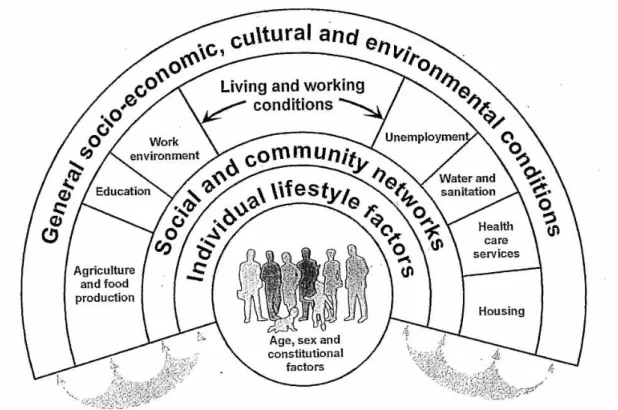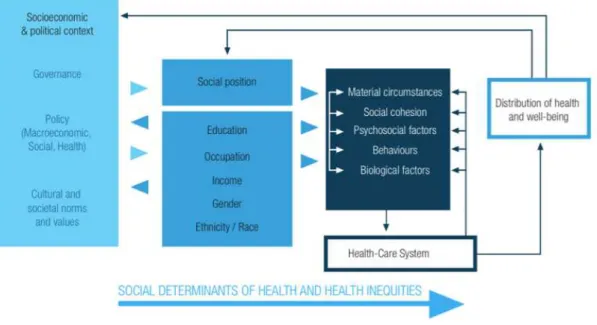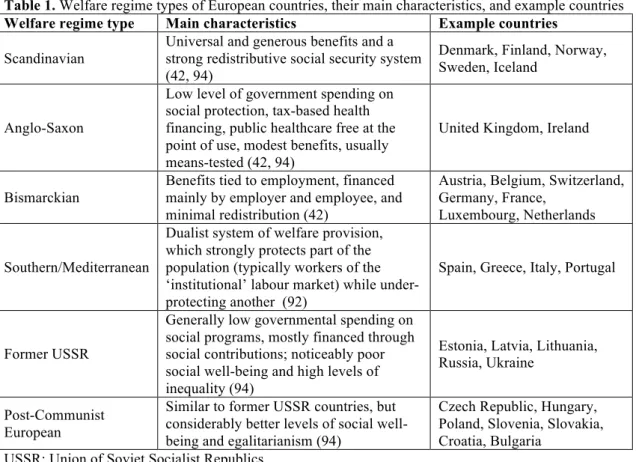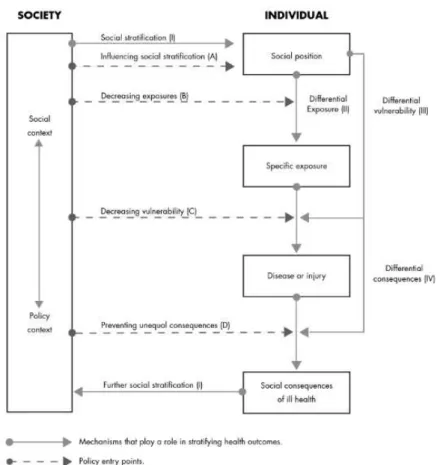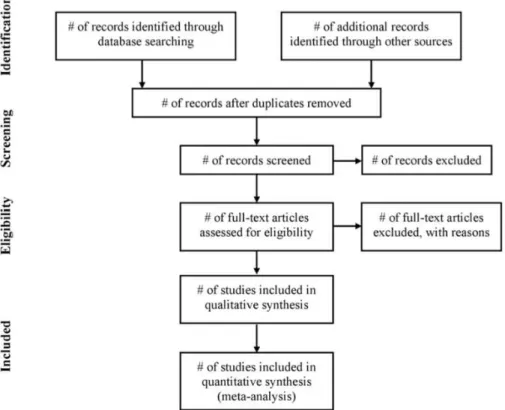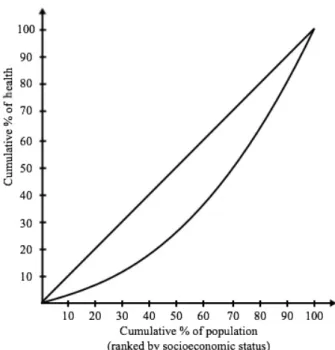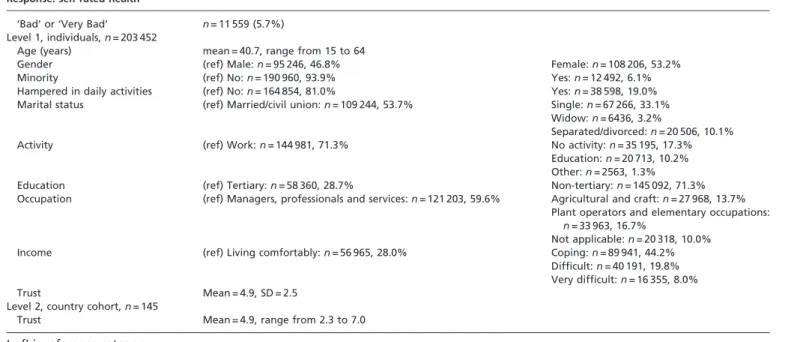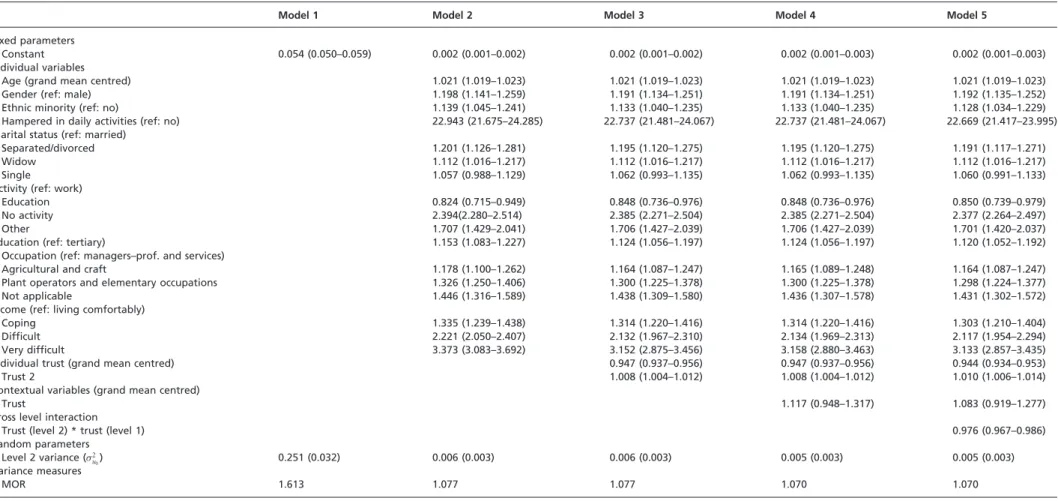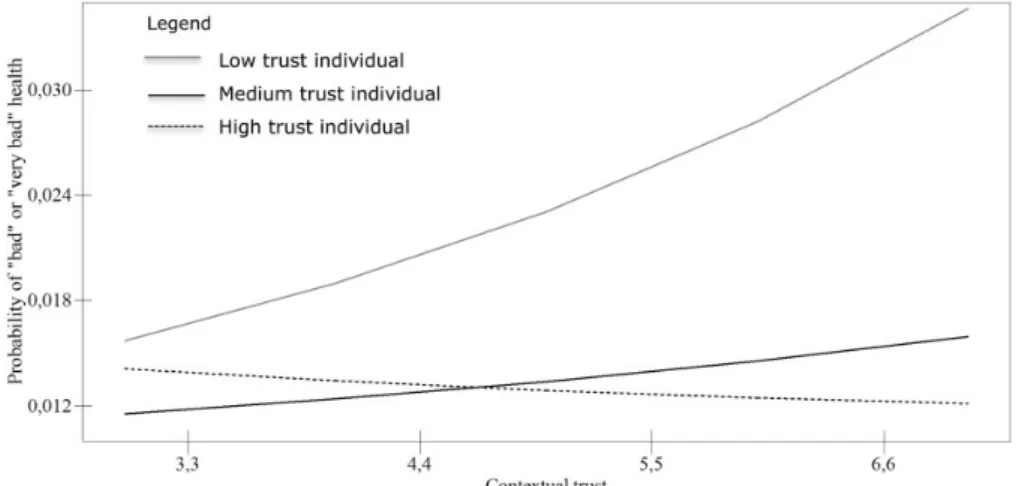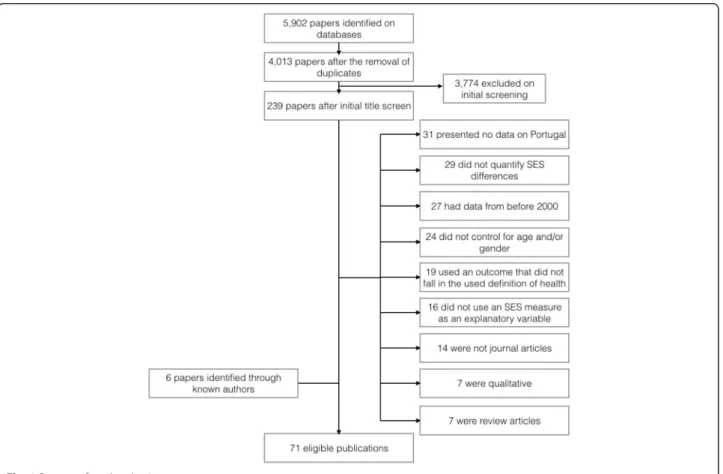Universidade Nova de Lisboa
Instituto de Higiene e Medicina Tropical
The relationship between context and health
inequalities: Europe and Portugal as case studies
Inês Campos Matos
DISSERTAÇÃO APRESENTADA PARA CUMPRIMENTO DOS REQUISITOS NECESSÁRIOS À OBTENÇÃO DO GRAU DE DOUTOR EM SAÚDE
INTERNACIONAL, ESPECIALIDADE DE POLÍTICAS DE SAÚDE E
DESENVOLVIMENTO
Universidade Nova de Lisboa
Instituto de Higiene e Medicina Tropical
The relationship between context and health
inequalities: Europe and Portugal as case studies
Autora: Inês Ferreira Pita de Campos Matos
Orientador: Professor Giuliano Russo
Coorientadora: Professora Luzia Gonçalves
Dissertação apresentada para cumprimento dos requisitos necessários à obtenção do grau de Doutora em Saúde Internacional, especialidade de Políticas de Saúde e Desenvolvimento, de acordo com o Regulamento Geral do 3.º Ciclo de Estudos Superiores Conducentes à Obtenção do Grau de Doutor pelo Instituto de Higiene e Medicina Tropical/Universidade Nova de Lisboa (n.º 474/2012) publicado no Diário da República, 2.ª série, n.º 223 de 19 de novembro de 2012.
Apoio financeiro:
Subsídio para Internos Doutorandos da Fundação para a Ciência e a Tecnologia Referência SFRH/SINTD/94891/2013
Publications from this dissertation
Campos-Matos I, Kawachi I. Social mobility and health in European countries: does welfare regime type matter? Social Science and Medicine. 2015;142:241-248 DOI: https://doi.org/10.1016/j.socscimed.2015.08.035
Campos-Matos I, Subramanian SV, Kawachi I. The ‘dark side’ of social capital: trust and self-rated health in European countries. European Journal of Public Health. 2016;26(1):90-95. DOI: http://dx.doi.org/10.1093/eurpub/ckv089
Campos-Matos I, Russo G, Perelman J. Connecting the dots on health inequalities – a systematic review on the social determinants of health in Portugal. International
Journal for Equity in Health. 2016;15(1):15-26. DOI: 10.1186/s12939-016-0314-z
Acknowledgements
To my supervisors – Luzia Gonçalves and Giuliano Russo – and other people who supervised my work on this thesis – I. Kawachi, S.V. Subramanian, and J. Perelman. To colleagues and bosses in other areas of my life – in particular Jorge Nunes and Pedro Serrano. To everyone who took the time to teach me, I am deeply grateful.
To my friends, who mostly distracted me from my work, and to whom I profoundly thank for that.
To my family, in particular to my parents, who have always supported me. My love, gratitude, and admiration for you is never-ending.
Prevention is the heart of Public Health. But equity is its soul.
Resumo
As desigualdades socioeconómicas na saúde têm sido observadas há séculos por todo o mundo. Décadas de investigação identificaram múltiplos fatores que determinam estas desigualdades, como educação ou emprego. Recentemente, o foco da investigação sobre desigualdades em saúde mudou de determinantes individuais para determinantes contextuais, como as características físicas e sociais do ambiente. No entanto, a investigação sobre os determinantes contextuais depara-se com a ausência de uma base teórica sobre como estes determinantes influenciam a saúde. Portugal, sendo um dos países Europeus mais desiguais, tanto em rendimento como em saúde, é um caso de estudo interessante para o estudo das desigualdades em saúde. Esta tese procura contribuir para a compreensão do impacto dos determinantes contextuais na saúde e na sua distribuição, utilizando Portugal e a Europa como casos de estudo.
Para cumprir este objetivo, foram selecionados três determinantes contextuais – capital social, regimes de bem-estar e alterações macroeconómicas – e os seus efeitos sobre a saúde e sobre as desigualdades em saúde foram explorados. Fora utilizados dados transversais do European Social Survey para analisar a associação entre capital social e saúde auto-declarada em países Europeus entre 2002 e 2012. A mesma base de dados foi utilizada para analisar a associação entre a mobilidade social e saúde auto-declarada em seis tipos de regimes de bem-estar Europeus. Estas análises utilizaram regressões logísticas multinível. Para analisar evidência sobre desigualdades socioeconómicas na saúde em Portugal depois de 2000 foi efetuada uma revisão sistemática da literatura. Dados transversais do European Union Survey on Income and Living Conditions foram utilizados para analisar alterações da desigualdade nas limitações em saúde em Portugal entre 2004 e 2014, tendo em conta as alterações macroeconómicas no País. Nesta análise, foram utilizados o índice de concentração e regressões logísticas múltiplas. O capital social contextual estava associado com pior saúde auto-declarada em indivíduos com pouca confiança interpessoal, influenciando assim a distribuição da saúde. Regimes de bem-estar Europeus estavam associados com a magnitude do impacto da mobilidade social na saúde. A revisão sistemática mostrou que o estudo dos determinantes contextuais em Portugal ainda é incomum. Alterações macroeconómicas em Portugal influenciaram a saúde e a sua distribuição na última década.
Com base nestes resultados, foi delineado um quadro conceptual sobre a influência do contexto na saúde da população e na sua distribuição. O quadro conceptual distingue claramente entre um mecanismo que influencia a saúde da população e outro que influencia a sua distribuição. Este quadro pode ser utilizado como base de análises futuras para clarificar os mecanismos pelos quais o contexto influencia a saúde e as desigualdades em saúde. Pode também apoiar decisões sobre políticas que procurem influenciar a saúde da população e reduzir as desigualdades em saúde.
Apesar das suas limitações, este trabalho produz evidência sobre os determinantes socioeconómicos da saúde em Portugal e sobre o impacto que o contexto pode ter nestes determinantes e nas desigualdades em saúde. O quadro conceptual proposto poderá avançar o debate sobre a influência do contexto na saúde e na sua distribuição.
Abstract
Socioeconomic inequalities in health have been observed for centuries throughout the world. Decades of research have identified multiple factors that determine these inequalities, such as education or employment. More recently, the focus of research in health inequalities shifted from individual to contextual determinants, such as physical and social characteristics of the environment. However, research on contextual determinants has been undermined by the absence of a theoretical basis to explain how these determinants influence health outcomes. Portugal is an interesting case study as it is one of the most unequal European countries both in income and health inequality, with limited academic and political attention to the topic. This dissertation aims to contribute to the understanding of how contextual characteristics can impact population health and health distribution, using Portugal and Europe as case studies.
To achieve its aim, this research selected three contextual determinants – social capital, welfare regimes, and macroeconomic changes – and explored their effect on health and health inequalities. Cross-sectional data from the European Social Survey was used to analyse how social capital was associated with self-assessed health in European countries between 2002 and 2012. The same database was used to analyse the association between social mobility and self-assessed health in six welfare regime types in Europe. These analyses used multilevel logistic regressions. A systematic review of the literature was done to collect and analyse evidence about socioeconomic health inequalities in Portugal after 2000. Cross-sectional data from the European Union Survey on Income and Living Conditions was used to analyse how inequalities in health limitations changed in Portugal between 2004 and 2014, in light of important macroeconomic changes in the country. For this analysis, the concentration index was calculated and a multiple logistic regression model was run for each year.
Contextual social capital was found to have an effect on individuals with low interpersonal trust, thus influencing health distribution. Welfare regime types were associated with the magnitude of the impact of social mobility on health. The systematic review showed that the study of contextual determinants of health inequalities is still uncommon in Portugal. Finally, important contextual changes in Portugal over the last decade seem to have influenced health and its distribution in the country.
Drawing on the findings from these analyses, a conceptual framework was outlined, summarising how context influences population health and health distribution. The framework draws a clear distinction between a mechanism that leads to changes in population health, and another mechanism that leads to changes in health distribution. This framework can be used as a basis for future empirical research, helping clarify the mechanisms by which context influences health and health inequalities. It can also support policies seeking to influence population health and health inequalities.
Despite its limitations, this work provides evidence on the social determinants of health in Portugal and on the impact that contextual characteristics can have on these determinants and on health inequalities. The proposed conceptual framework will hopefully further the debate on how context can influence population health and health distribution.
Contents
1. INTRODUCTION ... 1
1.1. The Study of Health Inequalities ... 1
1.1.1. Four Decades of Politics and Research on Health Inequalities ... 1
1.1.2. Contextual Determinants of Health: An Emerging Paradigm ... 6
1.1.3. Challenges and Opportunities in the Study of Contextual Determinants of Health ... 8
1.1.4. Summary ... 11
1.2. Measurement of Health Inequalities ... 13
1.2.1. Which Determinants? ... 13
1.2.2. Which Health Outcomes? ... 24
1.2.3. Which Measures? ... 26
1.2.4. Which Mechanisms? ... 28
1.2.5. Summary ... 34
1.3. Health Inequalities in Europe and in Portugal ... 36
1.3.1. Research Findings on Health Inequalities in Portugal ... 36
1.3.2. Portugal Compared to Other European Countries ... 40
1.3.3. Summary ... 41
1.4. Objectives ... 42
1.5. Methodological Approaches ... 43
1.5.1. Data Sources ... 43
1.5.2. Methods ... 45
1.5.3. Summary ... 50
1.6. Introduction References ... 51
2. RESULTS ... 65
2.1. The ‘dark side’ of social capital: trust and self-rated health in European countries ... 65
2.2. Social mobility and health in European countries: does welfare regime type matter? ... 72
2.3. Connecting the dots on health inequalities – a systematic review on the social determinants of health in Portugal ... 81
2.4. Shifting determinants of health inequalities in unstable times: Portugal as a case study ... 92
3. DISCUSSION AND CONCLUSIONS ... 103
3.1. Summary of Results ... 103
3.1.1 Social Capital and Health in European Countries ... 103
3.1.2. Social Mobility and Health in European Welfare Regimes ... 103
3.1.4. Shifting Determinants of Health Inequalities in Portugal ... 107
3.1.5. Summary ... 109
3.2. Limitations ... 111
3.3. The Effect of Context on Health and on Health Distribution ... 113
3.3.1. First Mechanism: Changes in Overall Health ... 113
3.3.2. Second Mechanism: Changes in Health Distribution ... 115
3.3.3. Conceptual Framework ... 117
3.3.4 Summary ... 121
3.4. Application of the Conceptual Framework ... 122
3.4.1. Social Capital and Health in European Countries ... 122
3.4.2. Social Mobility and Health in European Welfare Regimes ... 123
3.4.3. Shifting Determinants of Health Inequalities in Portugal ... 125
3.4.4. Summary ... 127
3.5. Contribution to Policy and Research ... 129
3.5.1. Regarding Health Inequalities ... 129
3.5.2. Regarding Europe ... 130
3.5.3. Regarding Portugal ... 131
3.5.4. Summary ... 132
3.6. Conclusions ... 133
3.7. Discussion and Conclusion References ... 135
4. APPENDICES ... 141
4.1. Appendix 1: Illustration of how changes in health inequalities affect absolute and relative measures – a hypothetical example ... 143
4.2. Appendix 2: Online supplementary data from the first publication ... 145
4.3. Appendix 3: Online supplementary data from the third publication ... 151
List of Figures
Figure 1. Wider Determinants of Health Model, by Dahlgren and Whitehead ... 3
Figure 2. WHO's Commission on the Social Determinants of Health Framework ... 5
Figure 3. A framework for elucidating the pathways from the social context to health outcomes and for introducing policy interventions ... 29
Figure 4. Flow of information through the different phases of a systematic review proposed by the PRISMA statement ... 46
Figure 5. Hypothetical concentration curve ... 49
Figure 6. First mechanism: changes in overall health ... 114
Figure 7. Second mechanism: changes in health distribution ... 116
Figure 8. The impact of context on health and health distribution: conceptual framework ... 117
Figure 9. Effect of contextual social capital on health distribution ... 123
Figure 10. Effects of welfare regimes and social mobility on health and health distribution ... 125
List of Tables
List of Abbreviations
BMI Body Mass Index
CC Concentration Curve
CHD Coronary Heart Disease CIx Concentration Index
CSDH Commission on the Social Determinants of Health DFID Department for International Development
ESS European Social Survey
EU European Union
EU-SILC European Survey on Income and Living Conditions GDP Gross Domestic Product
HI Health Inequalities
HIV Human Immunodeficiency Virus ILO International Labour Organization
OR Odds Ratio
PRISMA Preferred Reporting Items for Systematic Reviews and Meta-Analyses RII Relative Index of Inequality
SAH Self Assessed Health
SDH Social Determinants of Health SES Socioeconomic Status
SII Slope Index of Inequality
SR Systematic Review
UK United Kingdom
US United States
1. Introduction
1.1. The Study of Health Inequalities
1.1.1. Four Decades of Politics and Research on Health Inequalities
Academia has a long tradition of seeing itself as an autonomous body, free from
ideological thought and from social and political context (1). However, academic
work is not done in isolation from its surrounding world. The story of how academic
knowledge about health inequalities (HI) and the social determinants of health (SDH)
has evolved in the past four decades is a reflection of how this knowledge and
dominant political thought go hand in hand, sometimes one pushing forward more
vigorously.
The connection between socioeconomic determinants and health has been known for
centuries, but there has been a growing interest in the subject in the last four decades.
In Europe, this political and academic interest was shaped by a few landmark events.
The first political landmark was the publication of the Black Report in the United
Kingdom (UK) in 1980 (2). This report was set up by a Labour Secretary of State for
Health who was concerned about the dimension of mortality inequalities between
social classes (3). The report found that, despite three decades of a National Health
Service, HI still existed and could largely be explained by differences in material
conditions between social classes (2). But the final document was reported to a
Conservative government, elected in 1979 under the commitment to reduce public
spending, who dismissed it and failed to properly publish it (3). Despite this, the
report played a pivotal role in setting the research agenda for two decades after it was
published (3, 4).
The findings of the Black Report were informed by a body of academic work
published in the years before. Probably the most noticeable findings came from the
Whitehall study (3), a longitudinal study of civil servants working in London that
started in 1967 to analyse the ‘power of risk factors and indicators of coronary heart
disease (CHD) to predict mortality’ (p. 1165). The Whitehall study showed a clear
inverse relationship between grade of employment and CHD mortality that persisted
ever after controlling for a wide range of cardiovascular risk factors (5). As one of the
this was unexpected, as at the time common sense suggested that heart disease was
more common in people with higher-grade, more stressful jobs (6).
Overall, the Whitehall studies together with the Black Report reflected a change in the
understanding of the determinants of health. The UK was seen as a success in terms
of population health improvement, with extensive state-provided social support and
universal healthcare provision. These analyses showed that, over and above the direct
effect of the most basic determinants of health – such as diet or healthcare – strong
social forces operated to create a health gradient, even among people who had access
to all essential living conditions.
The positioning of HI and SDH in the research agenda led to a proliferation of
empirical analyses in the years ensuing the publication of the Black Report. In 1991,
Dahlgren and Whitehead proposed the ‘Wider Determinants of Health Model’,
probably the most widely known and used framework on this topic (7) (figure 1). This
model describes the main influences of health, built in layers, one on top of the other.
The structural environment is the overarching layer, which includes ‘general
socio-economic, cultural and environmental conditions’. This is followed by a layer of
living and working conditions, which includes factors like employment and
education. The next two layers refer to support from social networks and individual
lifestyle, respectively. Finally, the central layer is made of individual unchangeable
factors, such as age and sex. This model proved useful in presenting the main
determinants of health to broad audiences, and was groundbreaking when it was first
published, as it highlighted the importance of broader socioeconomic factors in the
production of health. It also emphasized the cumulative nature of the determinants of
health and provided a framework upon which to consider policy options, as each layer
can be translated into a level of policy intervention.
In 1997, after eighteen years of conservative rule, the UK elected a Labour
government. This new government was elected with a strong commitment to reduce
social inequalities, and quickly commissioned a report to ‘review and summarise
inequalities in health in England and to identify priority areas for the development of
policies to reduce them’ (8: p.5). This was materialized with the publication of the
Acheson Inquiry in 1998, which revealed a wide range of HI throughout the
life-course, some even increasing over the previous decades. The report clearly stated that
by a range of interventions that largely surpassed the responsibilities of the
Department of Health (8). Accordingly, its recommendations focused on a wide range
of these factors, such as income, education, housing, and gender. These
recommendations were welcomed and some were implemented by the government at
the time (9).
Figure 1. Wider Determinants of Health Model, by Dahlgren and Whitehead. Source: Dahlgren G, Whitehead M. Policies and Strategies to Promote Social 9. Equity in Health Stockholm: Institute for Future Studies. 1991.
The Black Report and the Acheson Inquiry placed the UK in the vanguard of political
attention to HI and influenced other European countries’ attitudes, such as the
Netherlands and Spain, where the topic entered the research and political agendas to
varying degrees (10). The World Health Organisation (WHO), which had also shown
interest in the topic since the 1980’s, established the Commission on the Social
Determinants of Health (CSDH) in 2005 ‘to support countries and global health
partners in addressing the social factors leading to ill health and health inequities’
(11). Building on accumulated evidence from the previous decades and the growing
political interest in the subject, the CSDH published its seminal report in 2008 (12).
health, however, it moved forward by also considering the social processes that lead to the unequal distribution of these factors. This dual meaning of the SDH (including
both the social factors that determine health and the processes that determine their
unequal distribution) is highlighted in the Commission’s conceptual framework
(figure 2). In this framework, the socioeconomic and political context (first box on the
left) is seen as the driver of social stratification, its nature and degree, influenced by
processes of governance, policies and cultural norms and values. These structural
drivers determine the magnitude of inequalities in social position, in terms of
well-known individual social factors: education, occupation, income, gender and
race/ethnicity. Social position then influences individuals’ exposure and vulnerability
to intermediary factors, such as material circumstances and biology, which directly
determine the distribution of health and well-being. The CSDH framework’s strongest
value probably lies in the distinction made between the drivers of social stratification
and the direct determinants of health, as determinants of HI and health, respectively.
This is an important distinction in terms of policy-making, since policies that aim to
tackle the determinants of health can be different to those tackling the determinants of
HI (13). This framework thus suggests that policies that tackle the drivers of social
stratification will influence health distribution, while those that tackle the direct
determinants of health will influence overall population health.
These landmark publications – the Black Report, the Acheson Inquiry and the report
of the CSDH – showed important similarities in both the causes identified and the
recommendations given to reduce HI (4). However, whereas the Black Report saw
individual material conditions as the main explanation for HI, the Acheson Inquiry
focused on individual socioeconomic status (SES), and the CSDH report on the role
of contextual factors. Accordingly, the policy recommendations move from
improvement of individual SES, to a notion of ‘proportionate universalism’ – the idea
that ‘interventions should be both universal and targeted to where there is more need’
(4: p.404). Attention was thus shifted from individual characteristics to how
contextual drivers, such as policies or cultural norms, influence the distribution of
health. This can be seen as a natural evolution, as knowledge about HI accumulates
and more determinants of health are explored and described. However, the shift
between individual and contextual determinants cannot be dissociated from its social
From the mid-20th century onwards, notions of individualism dominated political
thought of most industrialized societies (14). This view stressed the importance of
personal responsibility, dismissed social structures as a potential cause of HI, and was
only reinforced in the 1980’s by the advent of neo-liberalism, with the election of
Margaret Thatcher in the UK and Ronald Reagan in the United States (US). These
prevailing notions of individualism were also reflected on HI research: conceptually,
as ‘risky behaviours’ were seen as the explanation for HI, a product of individual
choice and responsibility; and methodologically, as statistical methods that gave a prominent role to individual characteristics were strongly favoured over the ones that
looked at social factors (methodological individualism) (15). But over the past
decades, individualistic notions that uphold neo-liberalism have been increasingly
challenged, and with it there has also been a shift in the focus of HI research and
public health practice (16). The flourishing of social epidemiology as a discipline
(17), the increasing use of statistical methods that account for contextual
characteristics (18), and the focus of the CSDH’s report on social processes are all a
reflection of this shift.
Figure 2. WHO's Commission on the Social Determinants of Health Framework, 2008. Source: Closing the gap in a generation: health equity through action on the social determinants of health. Final Report of the Commission on Social Determinants of Health Geneva: WHO. 2008.
Research on HI is thus a fine example of how academic thought is guided by much
steered by, political views. This is not to say that it is not valid, but that it must be
interpreted under the lens of dominant social values of the time.
1.1.2. Contextual Determinants of Health: An Emerging Paradigm
The focus on individual determinants of health has side lined the importance of
context in the production of health and its distribution. Many circumstances have
contributed to this. First, as discussed in the previous section, this individual focus
follows dominant political views of modern industrialized nations (14). These views
are guided by the centrality of individualism, concentrating on personal freedom,
choice and responsibility, and depreciating the impact of social, cultural and physical
contexts (19). Second, the epidemiological transition in industrialized countries
shifted the focus from transmissible to non-transmissible diseases. While social and
environmental context is clearly of great importance to transmissible diseases, the
connection is less clear for non-transmissible diseases (20). Third, research on SDH
has grown from the blossoming of social epidemiology as a discipline (17). In an
attempt to gain traction within epidemiologists, social epidemiology has used
mainstream epidemiological concepts to focus on individual (social) determinants of
health (20, 21). An example of this has been maintaining a ‘fear’ of the ecological
fallacy (inferring individual relationships from ecological relationships) (14, 15),
leaving behind the role of context as an important determinant.
This individualistic view of health and illness has important limitations. Despite
extensive recognition that disease causation is, except for a few rare exceptions, a
multifactorial process, research practices seem ‘obsessed’ with the study of one single
determining factor (20). This fails to recognize the complexities of the real world and
strongly limits the scope of effective public health interventions. Indeed, this
obsession with individual determinants can lead to ineffective public health
interventions that elicit no behavioural change. For example, while there is strong
evidence to support smoke free policies to reduce tobacco use (22), evidence of the
effectiveness of individual smoking cessation services is a lot less clear (23). This is
well illustrated by Frieden (24), who proposes that public health interventions can be
classified under a 5-tiered pyramid, from broad actions that address the SDH and the
context, gradually to actions focused on the individual. Successful interventions tend
Focusing on individual characteristics has further implications for HI. Common sense
might suggest that policies that improve overall health would also improve HI, but it
is not necessarily so. A recent review showed that a number of public health policies
that specifically aimed to reduce HI not only did not reduce them, but some even
increased them (25). These failures are not well understood, and are sometimes
attributed to the ‘persisting nature’ of HI (26) or to lack of political determination
(27).
It appears that a limiting individualistic view on the determinants of health has
hindered the creation and implementation of effective policies to improve health and
tackle HI. However, when reflecting on HI, context is unavoidable for a number of
reasons. Diderichsen, Evans and Whitehead suggested, in 2001, four reasons to
include context in a framework about HI: measurement, conceptual, etiological, and
distributional (28).
Measurement refers to the fact that some risks can only be measured at the group or
societal level, as they are not characteristics of the individual. For example, legislation
cannot be seen as an individual characteristic and can only be measured at a group
level. Furthermore, individual characteristics sometimes interact with contextual
characteristics; for example, research has suggested that contextual social capital
benefits men and women differently (29). This finding could only be determined by
including both contextual and individual variables in the analysis, which shows the
importance of measuring context when analysing population health and health
distribution.
Conceptually, a population is not merely a collection of independent individuals.
Biological agents, just as infectious agents, depend on community dynamics to
propagate. This can lead to a patterned distribution of exposure to risk factors and of
health outcomes, which is better analysed at a group level.
From an etiological perspective, research has shown that contextual characteristics
can be determinants of health. This has included physical characteristics, such as the
effects of air pollution on respiratory health (30), and social characteristics, such as
how neighbourhood norms and values determine to what extent violence is tolerated
Finally, context is also unavoidable to the extent that an individual’s ‘social position’
can only be defined in relation to the society s/he is in. Social stratification is an
inevitable characteristic of a society, but belonging to the ‘middle class’ has meaning
only within a society with a social structure that includes and defines what that
‘middle class’ is. Moreover, having a particular occupation, gender, race, or other
individual characteristic, has different meanings in different societies. In some
contexts, gender is a major determinant of social position, whilst in others it plays a
small role. In highly industrialized societies, occupation may be a good marker of
social position; in agrarian societies, land ownership might be a better reflection of
social position. ‘Social position’ can thus only be defined within a society, within a
particular context.
Despite its focus on individual determinants, the birth and growth of social
epidemiology is a reflection of how social circumstances are gaining recognition as
important determinants of health (17). The role of context has become more
prominent in the HI literature, which is easily observable by the steep rise of
published papers that look at contextual factors since the 1980’s (31). According to
Macintyre et al. (14), the resistance to the prevailing ‘methodological, conceptual and
political individualism’ (p. 126) is expressed by what has been called ‘The New
Public Health’, which called on public health professionals ‘to look upstream at the
causes of poor health and inequalities in health, rather than downstream at their
expression in individual behaviours or ill-health’ (p. 127). This interest has revealed
what other areas of knowledge, such as sociology and geography, knew long before:
that context can influence health above and beyond individual characteristics. This, as
Diez-Roux put it (32), is an emerging paradigm within public health sciences, the
notion that ‘not all health determinants are best conceptualized as individual-level
attributes’ (p. 1783).
1.1.3. Challenges and Opportunities in the Study of Contextual Determinants of
Health
Most frameworks that explore the processes of HI and SDH describe both contextual
and individual determinants. Dahlgrein and Whitehead’s framework (figure 1)
described layers of determinants from ‘general socioeconomic, cultural and
environmental conditions’ through to individual characteristics, such as age and
responsible for the distribution of individual determinants of health, such as income or
education (figure 2) (12).
But how does context influence health and its distribution? The answer to this
question has been undermined by a number of challenges facing this body of
literature. As an emerging topic, one of the main issues has been the heterogeneous
conceptualization of context (14). Different authors have used different definitions of
what context is, including at what physical or geographical level it operates –
household, neighbourhood or country will likely all influence health, but probably in
different ways. Diderichsen et al. (28), for example, define context as a ‘catch-all
phrase used to refer to the spectrum of factors in society that cannot be directly
measured at the individual level’ (p. 19), encompassing the ‘structure, culture and
function of a social system’ (p. 19). This vague definition highlights the difficulty to
homogenise the concept. Porta’s dictionary of Epidemiology (33), on the other hand,
defines context as ‘the location of a person by time and place’, referring to both
‘geographical location and to group membership’ (p. 58). This definition brings to
focus two components of context that are commonly identified: the physical and the
social environment. These environments can not only influence health, but may also
influence each other (34). For example, the extent of physical space a community has
available will influence how its individuals interact. This distinction brings to light
that, by being physical or social, context is not restricted to a geographical definition; contextual characteristics can be defined within a network of peers who interact
exclusively online, but who nonetheless share social norms that shape their elements’
health.
Another common conceptualization of context distinguishes between ‘compositional’
and ‘contextual’ effects. This distinction arose from geographical analyses that think
of place effects as a consequence of the characteristics of the people who reside in a
certain place (‘compositional’) and of the characteristics of the place itself
(‘contextual’). However, as Macintyre et al. (14) and Frohlich et al. (21) argue, this
distinction is not necessarily useful nor correct. In fact, there are complex
interdependencies between people (‘composition’) and places (‘context’), as
individuals are not placed at random where they live or where they work. As
Another factor hampering the appropriate analysis of contextual influences on health
is the lack of clear theorizing about the mechanisms by which context operates (14).
This leads to a search for contextual determinants of health that has no basis on a
strong theory of how these determinants operate. As Mitchell et al. (36) comment,
‘lack of theory has often resulted in a choice of variables with which to characterize
an area which is guided more by what is available ‘off the shelf’ than by careful
theoretical consideration’ (p. 68). As a result of unclear definition and theorizing,
measurement of context has been, in the least, heterogeneous.
This has also dismissed important questions such as which spatial or time scales are
appropriate. Indeed, contextual influences can be measured as characteristics of a
street, neighbourhood, city, or country, just to name a few. Pathways that link these
characteristics to population health and HI will differ according to the geographical
scale they are being measured at. For example, while a universal healthcare policy
might be a good measure of healthcare access, it does not take into account regional
inequalities in the distribution of healthcare services, which can only be detected with
a smaller scale analysis. On the other hand, ideological views such as racism and
other forms of discrimination may not be detected at such a small scale, but
nonetheless be prominent in the country and have an important effect on the health of
that population (37). Time scales are also oftentimes dismissed: most analyses
measure contextual exposure and health outcome at the same moment in time, but this
is often implausible, as exposures can take time to have an effect. For example, air
pollution may take decades to have an impact on adult mortality, and this biological
plausibility must be taken into account (14).
Finally, as described in the first section, context has also been pushed aside from
research as a consequence of dominant political views. As Margaret Thatcher
famously put it, “there is no such thing as society” (38).
Unclear definition, operationalization, and theorizing have considerably complicated
the construction of a coherent theory on the influence of context on health and HI.
This has led to important critiques, even comparisons with medieval medical theory –
Sloggett and Joshi (39) called the contextual influence a ‘social miasma’ (p. 1473).
However, despite the weaknesses in the current evidence on this topic, and the
critiques of its existence as an issue at all, researchers would tend to agree that where
et al. (14) conclude that ‘rather than there being one single, universal ‘area effect on
health’ there appear to be some area effects on some health outcomes, in some
population groups, and in some types of areas’ (p. 128). This conclusion suggests that
context can sometimes have little impact on overall population health, and a
tremendous impact on its distribution between population groups, and hence on HI.
Thus, context appears to have an important influence on health and its distribution
within a society, but current knowledge is considerably hampered by a number of
issues, such as heterogeneous conceptualization and measurement. Additionally,
context can have different effects depending on the individual, place, and time. This
differential effect suggests that not only it is necessary to take context into account
when studying HI, but that it may be key to their understanding. An appropriate
theoretical framework that summarizes these relationships would provide the much
needed basis on which empirical analysis could build evidence.
1.1.4. Summary
Research in HI and the SDH has grown exponentially in Europe since the 1980s,
when political interest in the topic first emerged. Academic and political interest in HI
evolved through this period of time, with a clear shift of focus from individual
determinants, individualistic methodology and ‘risky behaviours’, to social processes
and context as determinants of HI. This shift is reflected not only on dominant
political thought of industrialized societies, but also on dominant academic thought.
This parallel course shows how the academic discourse is not separate from the world
that surrounds it, as the views of researchers can be shaped by dominant normative
views of the society they are in.
The individualist approach that has dominated research on HI has constrained
knowledge and hindered the creation of policies that effectively reduce them. This has
happened because issues of heterogeneous conceptualization, measurement, and
theoretical definition have undermined the study of contextual determinants, which
has opened the field to considerable critique. However, contextual determinants are
unavoidable, particularly when exploring HI, namely for measurement and conceptual
issues. Ultimately, it is likely that context has a complex differential effect that
interacts with individual characteristics. This makes context key in the understanding
The notion that not all determinants of health are best conceptualized at the individual
level has been called the new paradigm of public health. As a new idea, it is still in
developing stage, and would benefit greatly from a solid theoretical basis that would
1.2. Measurement of Health Inequalities
1.2.1. Which Determinants?
For a long time and across many countries, the poor have had worse health and
shorter lives than the wealthy (41). This consistency is seen regardless of the major
causes of death in society: it is true when communicable diseases are the main killers,
and it is true for non-communicable diseases (42). It is seen through the life course,
from gestation to birth, childhood, adolescence, adulthood and old age (43). It is seen
using a number of different statistical methods and measurements, and it is seen by a
number of individual SES measures, like income, education or occupation (44). But
the study of contextual determinants has raised both conceptual and methodological
questions that cannot be answered by traditional views of individual characteristics
and traditional statistical methods alone.
Conceptually, recognizing contextual effects on individual health implies a shift in the
understanding of how risk factors operate. In traditional epidemiology, individual
characteristics are identified as causes or risk factors for ill health, implying that
interventions should be focused on the individual. Some critiques of this approach
claim that an exclusive focus on the individual can lead to counterproductive
processes of victim blaming (45). The new paradigm of contextual effects on health
recognizes that the context can be, in and of itself, a determinant of health.
Additionally, the acknowledgement of context as having an influence on health also
implies that individual characteristics must be framed by the context they are in. In
this sense, having a certain amount of money matters not only in absolute terms, but
also considering the average wealth of everyone else, i.e., what you have matters, but
what others around you have matters too. This implies that HI can be created, in part,
of psychosocial mechanisms. Indeed, a noticeable finding in HI research has been that
HI do not occur in a threshold effect. Systematic differences are not seen just below a
certain point of income, wealth or occupational rank. Rather, there is a socioeconomic
gradient in health, in which the poorest have worse health than the ones who earn an
average income, who in turn have worse health than the richest (41). This gradient is
seen for all SES determinants: financial resources, education and occupation. This
gradient shows that socioeconomic determinants do not influence health only because
they provide access to essential resources, otherwise there would be no difference
work through the social spectrum that produce systematic differences in health
outcomes. These effects are a consequence of psychosocial mechanisms.
While material conditions are widely recognized and important for the health
gradient, as they are directly related to access to health promoting resources, such as
quality food and housing, extensive research has shown that adverse social conditions
can directly lead to adverse biological effects, regardless of access to resources (46).
This view helps understand the socioeconomic health gradient. Within a structure of a
society, everyone is beneath someone else by some measure – be it money, prestige,
cultural capital, or others. This social hierarchy can create stress responses, as being
of a lower social status may lead to feelings of inadequacy and lack of control (47).
As such, since there is always someone better off, everyone suffers the consequences
of this gradient, not only the poorest. These stress responses have a direct impact on
biological functioning, and can lead to more health damaging behaviour, such as
drinking and smoking. This leads to a health gradient that affects everyone, even after
basic material conditions for a healthy life are satisfied. Noticeably, rather than being
opposite explanations, material and psychosocial mechanisms act together to help
explain the socioeconomic health gradient (44).
Psychosocial explanations highlight that, further than being a question of absolute
poverty, HI are also a question of relative deprivation. The international glossary of
poverty defines relative poverty as the ‘absence or inadequacy of those diets,
amenities, standards, services and activities which are common or customary in
society’ (48: p. 169). This notion of poverty implies that it can be a socially defined
concept, measured within the group the individual is in, as it depends on what is
‘customary in society’.
The health gradient and psychosocial explanations show that the creation of HI is
complex and a product of multiple determinants operating at the same time.
Importantly, these determinants occur at both the individual and contextual level
simultaneously, and neither should be ignored.
a) Individual Determinants
Historically, income, education, occupation and employment have dominated the
interchangeably, but research has shown that this is not necessarily correct, as they
can reflect different underlying causal processes (49).
i. Education
Education is probably the most commonly used measure of SES and has extensively
been related to various health outcomes. Comparative analyses between European
countries show strong associations of education with cause-specific mortality (50),
self-assessed health (SAH) (51), limiting long-standing illness (52), chronic
conditions (53), smoking (54, 55) and obesity (56). As a measure of SES, education
has a number of important advantages: it is easy to measure, shows high response
rates in surveys, is fairly comparable across countries, applicable to both working and
non-working individuals, tends to remain stable through life, and is not likely to be
affected by reverse causation, since it is usually determined in young adulthood and
remains stable throughout life (57). However, reverse causation cannot be completely
excluded, since a healthy life expectancy might induce higher investments in
education and ill children might be less able to complete education (58). Nonetheless,
analyses of compulsory schooling laws in the US and Europe, which ‘force’ most
people into education, regardless of their health prospects, suggest that education
causes better health, despite the opposite also being true (59-61).
Several mechanisms explain the pathway linking education to health. The effect
seems to be mediated in part by income and occupation, although analyses show an
educational gradient even after controlling for these factors (58). The remaining
health differences can be strongly explained by behavioural factors, which in turn
seem to be a consequence of better information and better cognitive abilities, which
affects the ability to process information regarding healthy behaviours and disease
management (62). Preferences also seem to play a part, as they vary systematically
across educational groups (62). Finally, education can also provide an individual with
a social network of similarly educated peers, which can have substantial health
benefits (41).
ii. Financial resources
Financial resources, such as income or wealth, are also strongly correlated with
health, independently of education. They can have an impact on health to the extent
better living conditions. However, assessing causality is difficult, since health
strongly increases one’s ability to earn money and several confounding factors – such
as education or preferences – might determine both better health and better income.
Whereas the effect of health on income has been extensively shown in a number of
societies, the effect of income on health remains more of an ‘open question’ (41, 58).
Unlike education, financial resources can be more difficult to measure, as people may
not be as happy to share this information, there are many components involved
(income, wealth, savings, property, etc.), and comparability can be hampered by
different currencies and differences in currency value, for example. Nonetheless,
income-related health gradients have been shown for SAH (63, 64), functional
limitations (64, 65) and smoking (55) in European countries.
iii. Employment
Employment, or lack of it, is central to most adults’ life and has been associated with
health in a number of settings. This association is not surprising. First of all,
employment provides income, which is essential for access to basic goods.
Unemployment can lead not only to financial strain, but also uncertainty about the
future. This leads to a second mechanism: stress. Unemployment, with the uncertainty
it brings, leads to a feeling of lack of control, which has been extensively associated
with adverse health outcomes (66). Employment also provides psychological benefits
– like providing a structure to the day, self-esteem, status and a sense of contribution
to a collective cause – that are absent in unemployment (67). Opportunities to
socialize are also more common when one is employed, and social support and
integration have extensively been linked to health (68). Finally, unemployed
individuals seem to have an increased risk of health-damaging behaviours, such as
smoking and drinking (69). This might occur because people who drink and smoke
are more likely to become unemployed, because people who become unemployed
drink and smoke more to deal with their stressful situation, as a consequence of a
common causal factor, or a combination of any of these. Regardless, employment is a
major factor in HI among working-age adults.
Analyses in European countries have shown that unemployment is associated with
iv. Occupation
The International Labour Organisation (ILO) (72) defines occupation as ‘a set of jobs
whose main tasks and duties are characterised by a high degree of similarity’ (p. 1).
Accordingly, occupational grades are usually classified according to tasks and
responsibilities involved. Probably the most commonly used classification is ILO’s
International Standard Classification of Occupations, which defines ten major
occupational groups, from elementary occupations to managers, defined in terms of
skill level and specialisation required for each occupation (73). Other classifications,
such as manual and non-manual (53), administrators, professionals, executives and
clerks (74) or white collar and blue collar (75) are sometimes used, but all reflect
different degrees of skills that are required for the job.
Occupational grade has been strongly associated with health outcomes. In European
countries, it has been associated with overall mortality (53, 76), stroke and ischaemic
heart disease mortality (77), infant mortality (78), child health (78), SAH, long term
limitations and chronic conditions (79). The Whitehall studies are one of the most
important contributions to the understanding of this relationship. These studies
showed that people in higher ranks had a stronger sense of control over their health,
their jobs and their lives (74), which is strongly associated with better health (66).
However, occupation can also reflect an individual’s place in society, to a greater
extent than financial resources, education or employment do. Having an occupation
will usually grant adequate earnings and a certain degree of job security, so the health
differences that remain can also be explained by the effect of social standing (rank)
and subjective feelings towards one’s position in society (59). In fact, a number of
authors have used occupation as a marker of ‘social class’ (80-82), possibly based on
the understanding that occupation reflects more than just skill levels and
specialisation.
v. Social Mobility
The SES of an individual can have an impact on their health at any given time and the
movement between different social strata can too. Social mobility is the process of
moving between social strata, either between generations (parents and children) or
within the life-course of the individual (inter- and intragenerational social mobility,
Social mobility has been associated with health in a variety of contexts (83, 84), but
the way it operates can be difficult to tease out. One possibility is that it is an
accumulation effect. Power et al. (85), for example, showed that in a birth cohort from
the UK, the accumulation of unfavourable social circumstances was more important
than social mobility per se in determining adult health. This means that, when
comparing two people with the same SES, one of whom ‘moves down’ the social
ladder and another who remains stable, the first will have worse health outcomes.
However, this is not a consequence of the downward social movement itself, rather a
consequence of having a lower SES at a given moment in life. Another explanation
for the association between social mobility and health is an opposite causal effect:
extensive empirical analysis has shown a ‘health selection effect’ that pushes people
who are unhealthier down the social ladder (84, 86). This is not surprising, as people
who are ill can be less capable to study and work, thus reducing their potential
earnings and social position. Finally, some evidence also suggests that social
movement in and of itself has some effect on health (41, 83). Surprisingly, it is not
just the downward movement that seems to have a negative impact, but also upward
movement, particularly within short periods of time, can also have a deleterious effect
(41). This unexpected effect may be a consequence of an increase in unhealthy
behaviour (such as smoking more because one has more available income), or of
physiological and behavioural adaptations to a different social setting.
b) Contextual Determinants
A multitude of contextual characteristics have been analysed in the literature as
potential determinants of health. Building on the definition of context outlined in the
previous chapter, these can be classified as physical or social determinants – with the
caveat that this is an oversimplified characterisation, as physical and social contextual
characteristics often interact with each other.
Physical determinants can be thought of in terms of natural environment – air, water,
noise, green spaces – and of the built environment – houses, roads, infrastructures,
and transport systems. Extensive research has shown a strong connection between the
built environment and health. Examples include impacts on mental health (87),
physical activity (88), eating habits (89), obesity (90), and drinking (91). This
influence can work through the availability of green spaces that allow people to have
space, or closeness of stores with fresh produce or alcoholic beverages that influence
people’s diet.
The built environment works together with contextual social factors to influence
health distribution. Stores with cheap alcohol may be accessible, but if dominant
social views look down on alcohol consumption, these may mitigate the negative
effect of the built environment. Similarly, easy access to a park will only lead to more
exercise and better health outcomes if people feel safe in these places.
Social determinants, on the other hand, can be defined as ‘factors, such as culture,
political systems, economics, and processes of migration or urbanization (…), that are
beyond the individual and are explicitly a function of population systems’ (20: p.9).
These factors can shape the health and health distribution of a population, or modify
the effects of other determinants. Three examples of contextual characteristics that
have been studied as macrossocial determinants of health are described: social capital,
welfare states and economic cycles.
i. Social Capital
Social capital has been the target of researchers from a multitude of disciplines. As a
consequence, its conceptualization has been somehow heterogeneous, but tends to
include two things: it is a resource and it is obtained from social interactions (92).
Kawachi et al. (93), for example, define social capital as the resources that are
accessed by individuals and groups through their social network connections.
Pierre Bourdieu produced the first analysis of social capital, who identified it as one
of the three forms of capital (together with cultural and economic capital), that define
how individuals are placed within a society structure (94). Social capital was thus
seen as a characteristic of the individual or of the relationship between individuals.
Political scientists, however, gave it a ‘twist’, by looking at social capital as a
characteristic of a social organization (95). Probably the most well-known proponent
of this view is Robert Putnam (96), who defined social capital as ‘features of social
organization, such as networks, norms, and trust, that facilitate coordination and
cooperation for mutual benefit’ (p. 35).
Thus, social capital can be seen as an individual level or a group level construct. From
an individual perspective, social capital can provide people with information (such as
or emotional support. The benefits from individual social capital can come both from
strong social ties (close, enduring relationships) and weak social ties (such as
acquaintances) (92). As a group level construct, social capital is a property of the
whole network of individuals. It can work in many ways, such as through social
contagion (spread of behavioural norms through a network), collective social action
(when individuals come together to face adversity or to fight for a common cause), or
informal social control (when adults ‘police’ the behaviour of youths in a
neighbourhood) (92).
However, the same close ties that produce health-promoting social capital can also
have negative consequences. Rostila (97) delves into this topic by reflecting on the
consequences of network closure. Strong ties can lead to strongly closed networks,
which limit the access of other members to their social capital; for example, a
dominant ethnic group may discriminate against an ethnic minority, excluding them
from the resources obtained through social capital produced within their social
networks. Additionally, social capital is not always health promoting. ‘Negative’
social capital can be reinforced within a closed network, such as when teenagers are
led to start smoking because of peer pressure. For example, an analysis of adolescents
with migrant backgrounds showed that social ties with non-migrant adolescents were
associated with increased use of cannabis and alcohol (98).
All these characteristics of social capital have made it challenging to operationalize.
According to Kawachi and Berkman (92), measurement of social capital has generally
followed one of two perspectives: network-based or social cohesion-based. Both can
be measured at either the individual or group level, but the first tends to measure
network characteristics (such as the number of people a person knows, or the strength
of a network), whereas the second is based on social cohesion measures. These
measures include perceptions and attitudes, such as interpersonal trust (‘Do you think
the people in this neighbourhood are, in general, trustworthy?’), and behaviours, such
as participation in collective action.
Trust is one of the most commonly used measures of social capital, probably because
it is frequently and easily assessed in surveys. Trust can facilitate the exchange of
information, can promote participation in communal activities, and can improve the
being a trusting individual and living in a trusting community can improve individual
health (99).
ii. Welfare States
In his seminal work about the classification of welfare state regimes,
Esping-Andersen (100) defines the welfare state as a system of social stratification. The
author classified welfare state regimes in three categories (conservative, liberal, and
social democratic) according to three principles: de-commodification (the degree to
which people make their living standards independent of pure market forces (101)),
social stratification (the welfare state’s role in social stratification), and the
public-private mix (the relative roles of the state, the market, and the family in the provision
of welfare) (102).
This classification has been highly debated, both for the typologies proposed, and for
the principles chosen (90). One of the criticisms has been the classification of
southern European countries as having an ‘immature conservative’ welfare regime
(103). This led Ferrera (104) to propose a slightly different classification in four
regime types: Scandinavian, Anglo-Saxon, Bismarckian, and Southern.
Important changes within Europe and the European Union (EU) also warranted the
inclusion of Central and Eastern European countries in this classification. The
historical trajectories of these countries can be separated in two, depending on the
extent to which the welfare effort collapsed in the 1990's (105). This distinction was
outlined by Fenger (106), who showed a clear distinction between Post-Communist
European and Former-USSR countries, based on variables that reflect government
spending, social situation and political participation.
The characteristics of these six European welfare regime types are described in table
1. It is important to note that countries tend to have a predominant welfare regime
type, but can have characteristics of more than one. As such, this classification cannot
be seen as an absolute description of each country.
It is intuitive to think that welfare regime type, as it is strongly related to levels of
social stratification and well-being, would have a strong impact on overall population
health and HI. In fact, variations of population health under welfare regime types have
been widely analysed (52, 64, 102, 107) and a recent review of the literature
